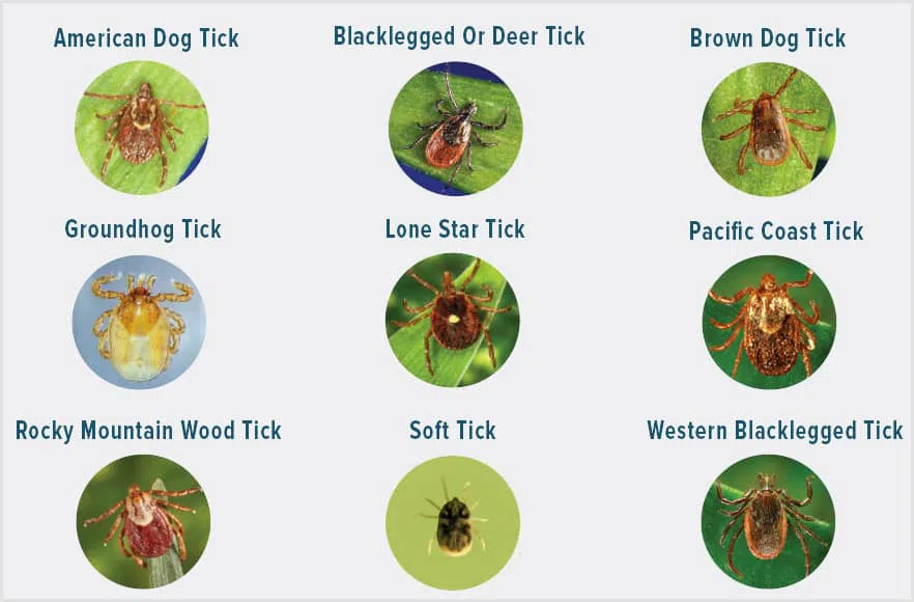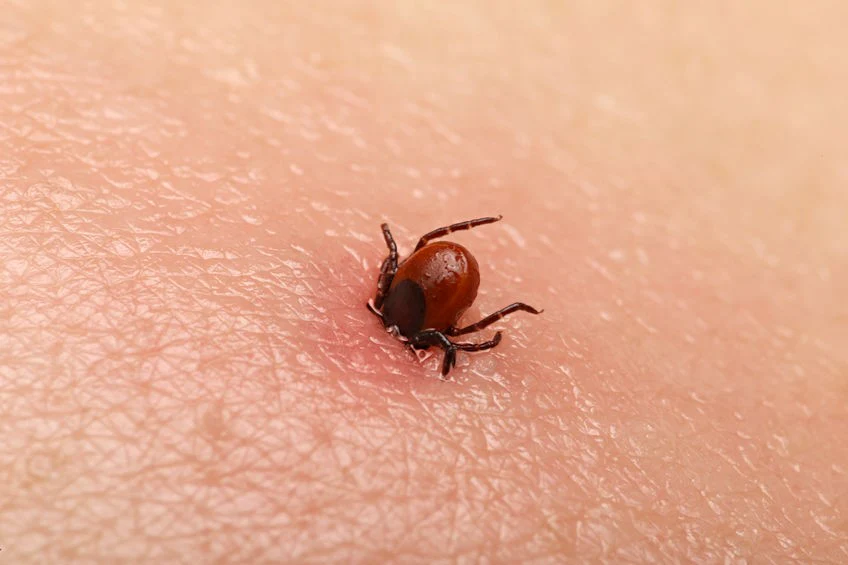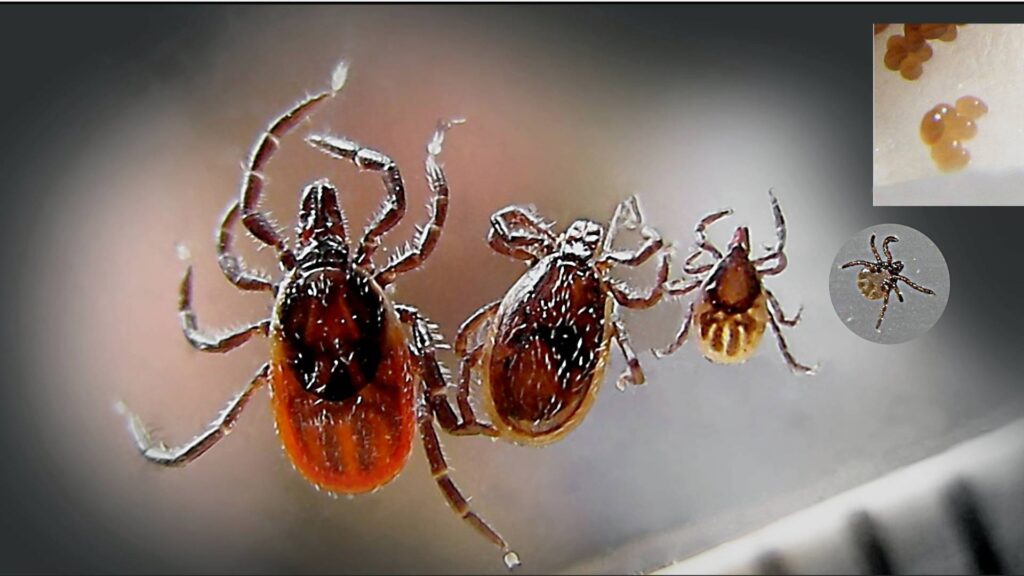Florida’s subtropical climate—characterized by warm temperatures, moderate winters, and elevated humidity—draws millions of people year-round to bask in the state’s sunshine and beaches. However, these same conditions that make Florida an ideal destination also encourage a variety of pests, including ticks. These small, blood-feeding parasites latch onto both animals and humans if not intercepted, leaving itchy bites and occasionally transmitting diseases. In Daytona Beach, along with the neighboring Ormond Beach, overlooking early tick warnings can escalate occupant distress, pet irritation, and health risks if the ticks carry harmful pathogens. This service page explores why ticks thrive in Florida’s environment, the indicators that you might be facing an infestation, and why enlisting a professional tick exterminator for tick treatments offers the most certain path to a pest-free property. Acting at the first hint—like persistent pet scratching, red bite welts on ankles, or spotting ticks indoors—frees you from ongoing anxieties, occupant complaints, and possible disease concerns down the line.
Why Ticks Flourish in Florida

- Mild Winter Temperatures
In cooler states, sub-freezing winters often kill ticks or slow their breeding for months. Florida’s mild winter rarely plunges to sustained freezing levels, allowing ticks to remain active throughout the year. Even brief cold snaps rarely last long, ensuring ticks face no natural winter die-off. Indoors, stable air-conditioning or heating keeps them comfortable enough to feed and reproduce if occupant diligence or pest control are lacking. - High Humidity and Rainfall
Ticks require moisture for their eggs, larvae, or nymphs to survive, and Florida’s humidity plus regular rains deliver a near-perfect habitat. Shaded yards, leaf piles, or fence lines often stay damp, letting tick eggs hatch and develop. Pets venturing through moist grass or heavily foliaged areas can pick up these pests, inadvertently transporting them indoors, where they may drop eggs in carpets or pet bedding. - Minimal Seasonal Dormancy
Ticks in colder climates tend to become dormant or severely reduce activity under snow or freezing conditions. In Daytona Beach or Ormond Beach, no sustained freeze interrupts breeding cycles, enabling ticks to produce multiple generations year-round. A handful of overlooked ticks can balloon into a pronounced infestation quickly if occupant housekeeping or professional approaches do not catch them early. - Abundant Wildlife and Pets
Ticks prefer attaching to warm-blooded hosts, especially domestic cats, dogs, or local wildlife such as raccoons or possums crossing lawns. Pets lacking monthly flea/tick preventatives can bring adult ticks into a home, letting them lay eggs in hidden corners. Without occupant awareness—like routine grooming or vacuuming—these eggs quietly hatch, sustaining a new generation of parasites. - Frequent Movement of People and Goods
In a tourist-friendly and growing area like Daytona Beach, occupant turnovers, short-term rentals, or secondhand furniture acquisitions can unknowingly introduce ticks into new locations. A single tick-laden crate or item can release hidden eggs or adult ticks in carpets or yard corners if occupant checks do not catch them promptly.
Indicators of a Tick Infestation
- Pets Scratching or Grooming Excessively
A primary clue is a dog or cat frequently biting at fur near the ears, belly, or hind legs—typical tick attachment spots. Persistent itching or restlessness could reveal ticks latched on, especially if occupant notice small, dark lumps when combing through fur. Some pets may develop red, inflamed skin if they react strongly to tick bites. - Ticks Crawling on Floors or Walls
Certain tick species, like the brown dog tick, can complete their life cycle indoors if they have consistent blood meals. Spotting small, dark bugs crawling near baseboards, pet bedding areas, or along corners strongly signals an expanding colony. Fast occupant or professional actions (like vacuuming or specialized sprays) can prevent further spread. - Bites on Humans
Though ticks favor animals, they can bite humans if other hosts are unavailable. A red bump or mild rash forming at the attachment site often indicates a tick presence. Noticing repeated bites on ankles or legs after yard work or near pets suggests ticks lie hidden in carpets or yard edges. - Tick Eggs or Larvae in Yard Debris
Ticks wait in shaded, moist yard areas, like leaf litter or tall grass, for passing hosts. Inspecting yard corners or raking debris can reveal adult ticks or small clusters of eggs. Occupant-based yard cleaning plus immediate occupant or professional solutions keep these parasites from migrating indoors. - Pet Avoids Formerly Favorited Spots
If a pet shuns a corner of the yard or a lounge bed it once loved, that area may be infested with fleas or ticks. Checking the bedding or yard patch often exposes adult ticks waiting for a host. Prompt occupant or professional solutions—like insect growth regulators—stop the infestation before it spreads.
Why Quick Tick Treatments Are Necessary
- Disease Transmission Concerns
Some ticks can carry pathogens causing illnesses such as ehrlichiosis or anaplasmosis in Florida. Though not all ticks are infected, repeated bites raise the chance of disease exposure for people or animals. Eliminating ticks promptly safeguards occupant or pet health. - Prolonged Pet Irritation
Fleas cause significant discomfort already, and ticks compound pet misery by attaching for days, sometimes inducing secondary infections or anemia in severe cases. Fast occupant or veterinarian solutions, plus environmental eradication, saves animals from drawn-out suffering and owners from potential vet expenses. - Spread to Adjoining Properties
In multi-family complexes or close neighborhoods, ticks can cross property lines, hitching rides on wildlife or wandering pets. Early occupant-based or building-wide solutions limit expansions across multiple lawns, preventing a community-wide outbreak. - Ongoing Occupant Stress
Sharing living spaces with hidden ticks fosters occupant anxiety over potential bites, especially for children or pets. Thorough extermination and occupant awareness calm these fears, letting normal routines resume without constant scanning for parasites.

Why a Professional Exterminator Is Key
- Complete Indoor-Outdoor Investigation
A tick exterminator checks floors, rugs, pet resting spots indoors and yard edges, fence lines, or shaded damp corners outdoors. Identifying egg clutches or clusters of adult ticks clarifies whether occupant or staff must focus on yard cleanups or deep carpet treatments, or both. - Safe, Directed Applications
Over-the-counter foggers might oversaturate occupant spaces with chemicals while missing fleas or ticks entrenched in corners. Professionals deploy insect growth regulators or adulticide sprays precisely where ticks gather—like pet bedding corners or moist yard edges—ensuring they contact lethal substances. - Life Cycle Disruption
Ticks advance through eggs, larvae, nymphs, and adults. Missing pupae or hidden eggs can re-ignite infestations weeks after occupant or staff elimination attempts. Exterminators integrate yard or carpet solutions, occupant vacuuming, and insect growth regulators to destroy ticks at each phase comprehensively. - Pet-Vet Coordination
Occupants must coordinate with veterinarians for monthly flea/tick preventative measures on pets. Without such synergy, unprotected animals risk reintroducing ticks from outside. Medicated pets help kill ticks that latch on, halting reproduction cycles. - Follow-Up Monitoring
Because some tick eggs or dormant pupae might slip past initial treatments, occupant checks or scheduled re-visits confirm no new wave emerges. If occupant bites appear again, additional targeted spot treatments finalize occupant comfort.
Methods a Tick Exterminator Might Use
- Vacuuming and Steam Indoors
A thorough vacuuming of carpets, rugs, and furniture picks up adult ticks, eggs, or larval forms. Occupants discard vacuum contents in sealed plastic outdoors. Steam cleaning – delivering high heat – kills ticks deeper in fabrics or upholstery that conventional sprays might not penetrate effectively. - Insect Growth Regulators (IGRs)
Indoors, IGRs stop larvae from becoming biting adults. Outdoors, larvicides sprayed along fence lines or shady yard corners hamper eggs. Occupants typically keep pets or children away until dryness or recommended intervals pass to ensure minimal chemical exposure. - Yard Adulticides
Many ticks lurk in tall grass, leaf litter, or moist yard areas. Exterminators apply adulticidal sprays or granules around yard perimeters. Occupant yard upkeep – short mowing, removing debris – denies ticks the shady, damp corners they thrive in. - Pet Care
Even the best environmental steps fail if occupant animals remain unprotected, allowing ticks to feed and lay eggs. Keeping dogs and cats on monthly tick preventatives from veterinarians is essential. Regular grooming checks and swift removal of any ticks found hamper new infestations. - Follow-Up Confirmations
Because eggs may hatch days or weeks after initial occupant or professional coverage, occupant vigilance or re-treatments ensure newly emerged ticks face lethal conditions. If occupant sightings or bites persist, additional yard or indoor focus eliminates leftover pockets.
Serving Daytona Beach and Ormond Beach
Daytona Beach: A major coastal hub with frequent tourism, occupant transitions, and pet activity. Ticks might stow away in travelers’ luggage or jump onto dogs exploring local parks. Occupant synergy – scanning pets after outings, vacuuming floors, discarding yard litter – plus professional solutions hamper expansions across multi-floor accommodations or older homes alike.
Ormond Beach: Renowned for scenic beaches and laid-back living, this area’s lush greenery fosters insects that feed local ticks. Occupants combining yard maintenance—removing damp leaf piles or trimming shrubs near walls—and consistent pet preventative measures stifle large tick populations near foundations or yard corners. Early occupant detection—like noticing red bites after lawn chores—plus a thorough extermination approach keeps them from overshadowing daily life.

Why Our Tick Treatments Excel
- Florida-Specific Tactics
Because southwestern Florida rarely experiences the harsh cold that kills ticks, occupant synergy—like dryness, yard grooming, and monthly pet medications—plus targeted insect growth regulators or yard sprays addresses ticks at every life stage, from egg to adult. - Precision for Occupant Safety
We apply adulticides or larvicides exactly where ticks hide – corners, pet bedding, or fence lines – limiting occupant or pet chemical exposure while forcing ticks into lethal contact. Occupants generally only wait for products to dry before resuming normal routines. - Pet-Centric Emphasis
Medicated dogs or cats, protected by veterinarian-approved flea/tick products, kill ticks feeding on them, thwarting re-establishment. Occupants checking animals regularly after walks or grooming them thoroughly removes new ticks before they drop eggs inside. - Follow-Up Assurance
Because tick eggs might hatch weeks after occupant or professional coverage, occupant re-checks confirm no missed pockets remain. If occupant bites or sightings reappear, additional yard or indoor treatments finalize occupant relief, guaranteeing no enduring infestation.
Next Steps
Seeing your dog itch persistently, noticing tiny, jumping insects near floors, or discovering red bites around ankles after stepping outside? Contact us to learn more or schedule your service. Our tick exterminator strategies in Daytona Beach and Ormond Beach eradicate fleas or ticks at each stage—egg, nymph, adult—indoors and out, restoring occupant comfort. By acting quickly, you avoid continuous bites, occupant frustration, or any disease worries these pests might bring.
Combining occupant housekeeping—like vacuuming, washing pet bedding weekly, discarding yard litter—and specialized insect growth regulators, adulticides, or larvicides ensures ticks face lethal conditions. Freed from these hidden parasites that sometimes lurk in shady corners or jump on unsuspecting pets or owners, southwestern Florida property owners can fully enjoy the region’s pleasant climate and scenic outdoors without constant concern over biting pests.
Maintaining a Tick-Free Environment
- Regular Vacuuming: Thoroughly vacuum carpets, rugs, or furniture each week, discarding vacuum contents outside in sealed plastic. This scoops up adult fleas or ticks and eggs.
- Launder Pet Bedding: Wash pet blankets or crate pads on hot settings, finishing with high-heat drying, killing any ticks or eggs embedded in fabrics.
- Use Pet Preventatives: Keep dogs and cats on monthly topical or oral solutions recommended by a veterinarian, swiftly killing ticks that latch on, preventing them from reproducing.
- Yard Care: Mow lawns short, remove leaf piles, or address damp corners. Ticks thrive in shaded, moist areas. Restrict wildlife visits by storing trash securely if possible.
- Post-Travel Checks: After yard activities or dog park visits, inspect socks or pant cuffs for hitchhiking ticks. Thoroughly comb pets, removing ticks promptly if discovered.
Through occupant vigilance plus rigorous pest control methods, southwestern Florida families and businesses remain free from these pesky, blood-feeding parasites. Even in mild winter climates favoring near-constant tick activity, occupant synergy—like dryness, yard cleanliness, and veterinarian-led pet protection—and robust extermination solutions hamper ticks at each turn, ensuring daily life is spared the itch and worry of these unwanted pests.
